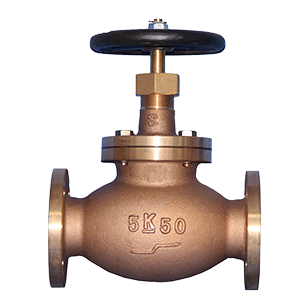In industrial flow control, the globe valve is a trusted solution widely used for precise flow regulation, throttling, and positive shut-off in various piping systems. However, like all mechanical devices, globe valves are not perfect for every situation. While their benefits are numerous, understanding their limitations is essential for system designers, engineers, and maintenance professionals.
So, what is the disadvantage of using a globe valve? Let’s explore the key drawback—and why it matters—along with supporting context to help you make informed valve selections.
First, What Is a Globe Valve
A globe valve is a type of linear motion valve that uses a plug (disk) to move up and down to regulate flow. It gets its name from its traditionally spherical body shape. These valves are used in systems requiring:
-
①Frequent throttling
-
②Precise flow control
-
③Isolation of sections in pipelines
They’re commonly used in power plants, HVAC systems, refineries, and water treatment facilities.
Primary Disadvantage of Globe Valves
The main disadvantage of globe valves is the relatively high pressure drop they introduce into the pipeline compared to other valve types like gate valves or ball valves.
Why Does This Happen
-
①The flow path in a globe valve is not straight. Fluid must change direction (typically making a Z-shaped path) as it flows through the valve body.
-
②This change in direction increases turbulence and resistance, which reduces pressure downstream of the valve.
-
③As a result, globe valves are less energy-efficient and not ideal for full open/close applications where minimal resistance is desired.
Other Disadvantages of Globe Valves
While pressure drop is the most significant drawback, there are a few other limitations to consider:
1. Higher Operating Torque
-
①Due to the perpendicular movement of the plug against fluid pressure, globe valves typically require more force to open or close, especially under high-pressure conditions.
-
②This can result in the need for larger actuators or stronger handwheels, increasing both installation costs and space requirements.
2. Heavier and Bulkier Design
-
①Compared to gate valves of the same size and pressure rating, globe valves are generally heavier, bulkier, and more expensive.
-
②This can be a problem in systems with weight restrictions or compact layouts.
3. Seat and Disk Wear
-
①The throttling action and flow turbulence can lead to accelerated wear of the valve seat and disk.
-
②Maintenance may be required more frequently, especially in high-cycle applications.
4. Higher Cost for Equivalent Size
-
①Globe valves tend to be more expensive than equivalent-size gate valves or ball valves due to their complex internal structure and precision flow control features.
-
②If throttling is not required, the extra cost may not be justified.
Comparison: Globe Valve VS Other Valves
| Feature | Globe Valve | Gate Valve | Ball Valve |
|---|---|---|---|
| Flow Control | Excellent | Poor | Fair |
| Pressure Drop | High ❌ | Low ✅ | Very Low ✅ |
| Full Bore Flow | No ❌ | Yes ✅ | Yes ✅ |
| Cost | Medium to High ❌ | Low ✅ | Medium |
| Operating Torque | Medium to High ❌ | Low ✅ | Low ✅ |
| Best Use | Throttling | On/Off | On/Off, Quick Action |
Post time:
Aug-08-2025
- English
- French
- German
- Portuguese
- Spanish
- Russian
- Japanese
- Korean
- Arabic
- Irish
- Greek
- Turkish
- Italian
- Danish
- Romanian
- Indonesian
- Czech
- Afrikaans
- Swedish
- Polish
- Basque
- Catalan
- Esperanto
- Hindi
- Lao
- Albanian
- Amharic
- Armenian
- Azerbaijani
- Belarusian
- Bengali
- Bosnian
- Bulgarian
- Cebuano
- Chichewa
- Corsican
- Croatian
- Dutch
- Estonian
- Filipino
- Finnish
- Frisian
- Galician
- Georgian
- Gujarati
- Haitian
- Hausa
- Hawaiian
- Hebrew
- Hmong
- Hungarian
- Icelandic
- Igbo
- Javanese
- Kannada
- Kazakh
- Khmer
- Kurdish
- Kyrgyz
- Latin
- Latvian
- Lithuanian
- Luxembou..
- Macedonian
- Malagasy
- Malay
- Malayalam
- Maltese
- Maori
- Marathi
- Mongolian
- Burmese
- Nepali
- Norwegian
- Pashto
- Persian
- Punjabi
- Serbian
- Sesotho
- Sinhala
- Slovak
- Slovenian
- Somali
- Samoan
- Scots Gaelic
- Shona
- Sindhi
- Sundanese
- Swahili
- Tajik
- Tamil
- Telugu
- Thai
- Ukrainian
- Urdu
- Uzbek
- Vietnamese
- Welsh
- Xhosa
- Yiddish
- Yoruba
- Zulu
- Kinyarwanda
- Tatar
- Oriya
- Turkmen
- Uyghur

